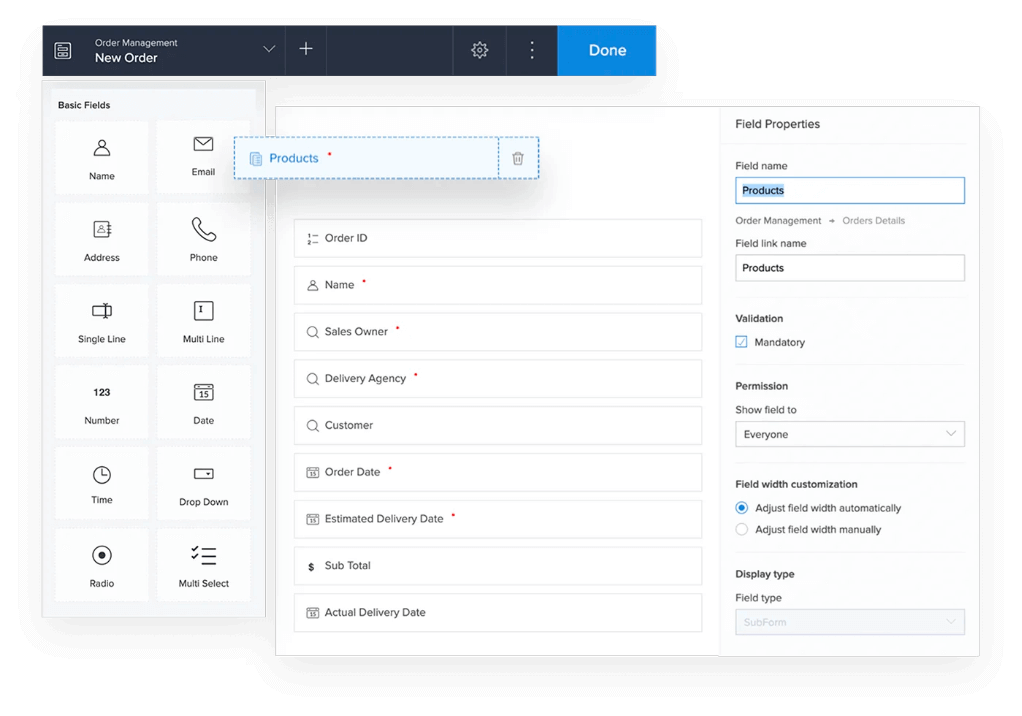Good Reasons On Picking Legacy application modernization with Low-code
Good Reasons On Picking Legacy application modernization with Low-code
Blog Article
The Ease Of Use Of Low-Code Apps Is One Of The Biggest Benefits.
Due to a number of factors, low-code application development is more accessible to non-developers. They are commonly referred to as "citizens developers."
Drag-and-Drop Builders. Low-code platforms come with drag-and-drop interfaces. This gives non-programmers the ability to create applications visually, without writing code. This makes it easier for people with no technical expertise to be involved in the process of development.
WYSIWYG Editors editors "What You saw is what You Get" editors aid users in creating workflows and interfaces that appear similar to the final product and make them more understandable.
Simple design of Workflow and Logic
Visual Workflow Modelling: Users can use visual workflow to develop business processes, application logic and flowcharts through diagrams and visual flowcharts. These methods are much more intuitive than conventional coding techniques.
Pre-built Logic components: Low-code platforms include logic components already built (e.g. conditional statements and loops) and can be configured easily, reducing the requirement for complicated coding.
Reusable Components and Templates
Libraries of prebuilt templates: Low-code platforms usually offer templates from libraries for popular application types. This gives non-developers the possibility of starting with a solid base and then modify it according to their needs.
Reusable Modules and Widgets: Users can make use of modular and reusable widgets, streamlining the creation process and reducing the requirement for technical knowledge.
Tutorials for Guided Development and Guided Development
Step-byStep Guides: Platforms will typically provide a development path with guidance, online tutorials, or on-screen instructions to assist those who are not developers in developing applications.
Interactive Tutorials Interactive tutorials that are hands-on and interactive allow users to learn through doing, improving their comprehension and confidence using the platform.
Integration with tools already in use
Seamless integration Low-code platforms are developed to integrate seamlessly with existing business systems and tools (e.g. CRM, ERP) allowing non-developers create applications that fit into their workflows.
APIs and Connectors: APIs integrated into connectors and APIs enable users and non-developers to connect applications to external services, without the need to write complex programming.
Collaboration Features:
Team Collaboration Features, such as real-time collaboration and shared workspaces, help non-developers and professionals to work together effectively.
Role-based Access Control: Developers can be assigned specific roles that have appropriate access levels, which ensures they can contribute to the development process without compromising security or function.
Automated Testing and Debugging
Test tools are included: Many low-code platforms have built-in debugging and testing tools. These tools automate the process, making it easy for non-developers to make sure their applications are operating properly.
Error Highlighting Whenever errors are detected the platform highlights these and suggests solutions. It helps non-developers in solving the issue.
Overall, the benefit of developing applications using low-code in terms of accessibility for non-developers lies in its ability to make development more accessible. Low-code platforms enable business users to participate actively in the development and maintenance of applications by providing intuitive visual tools and a guided user experience. This helps bridge the gap between the technical implementation and business demands. See the best Low-code Platform for application development advice for more recommendations including mobile app development platforms, cross platform mobile development, cross platform app development, app modernisation, rad development, application modernisation, microsoft azure sql, push alerts, application development platforms, mobile development platforms and more.
Low-Code Application Development Offers Numerous Advantages In The Area Of Cost-Effectiveness.
Low-code development of applications offers a variety of advantages in terms of cost-effectiveness which makes it a desirable choice for companies looking to maximize their development budgets while also delivering high-quality apps. Here are the key advantages: Lower development costs:
The low-code platform reduces the need for long manual code. This saves time and effort on the part of developers when developing applications. This results in less labor costs.
Reduced Developer Resources: Since low-code is more efficient and less time to develop, fewer specialized developers will be required. Hiring and staffing costs can be reduced significantly.
More rapid time to market
Accelerated Development: Low-code platforms include visually-based development tools, components that are pre-built, and other capabilities that facilitate rapid development of applications. Businesses can introduce their products to market more quickly. This can translate into increased revenue and improved position in the marketplace.
Rapid prototyping allows businesses to build and test prototypes in a very short amount of time, which reduces the amount of time needed for the development phase. This lets them make quicker prototypes after receiving feedback from users.
Low Maintenance Costs
Simpler Maintenance: Low-code platforms with their modular components and standardised components, are easier to maintain. This helps reduce maintenance and support costs.
Automated Patches and Updates Low-code platforms are able to handle patching and updating applications in a way that is automatic. This means that the application is secure and always up-to-date with no manual intervention.
Efficient Resource Utilization:
Low-code platform contributions let both business users and others who are not developers to take part in the creation process. This decentralization of development processes permits firms to make use of the skills and abilities of a broader variety of employees.
Improved utilization of IT resources: IT departments have the ability to focus on more strategic projects instead of being bogged-down with mundane development tasks. Overall efficiency and productivity are increased.
Scalable pricing models:
Subscription-Based Pricing: A lot of low-code platforms provide flexible subscription-based pricing that scales with use. This allows businesses to be able to align their spending to the actual requirements and expansion, while avoiding huge upfront expenses.
Pay-Assosiated Options: Some platforms offer pay-assosiated alternatives. They ensure that businesses pay only for the resources utilized which is advantageous to entrepreneurs and small businesses with limited funds.
Reduced Third-Party Costs for Software:
Low-code platforms are built-in with integrations and functionalities, which can reduce the cost of software subscriptions and licensing.
Pre-Built Integrates with popular systems and services You can save time and money by avoiding the need to develop custom integrations.
Improved ROI
Faster return on Investment (ROI) by combining rapid application development with less expense and a quicker time to market, companies are able to achieve an increase in ROI for their applications.
Enhanced Agility - Businesses can quickly adjust to changes in the market and changing customer needs. This lets them stay current and take advantage of opportunities that come up.
Reduced Training Costs
User-Friendly interfaces: Low-code platforms offer user-friendly and intuitive interfaces that cut down on the learning curve. They also eliminate the need for lengthy training programs.
Accessible Resources: Many platforms that make use of low-code have an extensive range of educational materials, tutorials and community support. This means that there is less requirement for formal education as well as the costs associated with it.
Collaboration is made easier:
Enhanced collaboration Tools: The integration of collaboration tools allows improved communication between team members and a reduction in project overhead.
Unified Development Environment. An unified development platform helps reduce costs and streamline workflows by reducing the complexities of managing multiple tools.
The efficiency of low-code application development is due to its ability to reduce maintenance and development costs, accelerate the time to market, maximize resources, and offer different pricing options. All of these factors provide huge financial benefits to companies and make low-code development a viable choice for businesses looking to increase their budgets for development while also delivering robust, scalable, and high-quality applications. Have a look at the top rated Legacy application modernization with Low-code url for website advice including cross platform mobile app development, application modernization software, no code platforms, software for app development, cross platform app dev, develop web app, paas service, driver jdbc, mobile app development platforms, application modernization software and more.
Benefits Of Low-Code App Development With Respect To Limitations And Customization
Low-code application development offers an approach that is balanced and offers significant advantages in terms of solving limitations and allowing modification. These are the key advantages: Managing the limitations
Overcoming Complexity Barriers:
Simple development: Platforms that use low-code reduce the amount of work by supplying templates and components pre-built for you that allow for quicker development and deployment for complex applications.
Guided Workflows: Several platforms offer guided workflows and wizards to help developers navigate through complicated processes, reducing the likelihood of errors and ensuring consistency.
Scalability Solutions
Scalability built-in: Lowcode platforms usually include features that allow for an scalable architecture. They permit applications to handle increasing loads without major changes.
Performance Monitoring Performance Monitoring: Tools for monitoring performance and optimization ensure the applications run as efficiently as they can be, regardless of their size.
Security and compliance:
Integrated security features: Low-code platforms have security measures like encryption as well as role-based access control and automated compliance checks, which address common security concerns.
Platforms regularly update their security and compliance measures to ensure that their applications are safe from new threats.
Customization:
Extensibility:
Low-code platforms let developers expand functionality beyond what is available by adding customized code.
Moduls and custom plugins: Developers may develop custom plug-ins and modules that provide specific functionality that are tailored to the specific requirements of a company.
APIs and Integration:
API Support: The extensive API support permits seamless integration of other systems and services. This facilitates extensive customization and connectivity.
Third-Party Services: Low code platforms offer connectors that are built for popular third-party services. This makes it much easier to modify and integrate apps.
Flexible UI/UX Design:
Customizable user interfaces: Developers are able to modify and design user interfaces to meet specific branding requirements and user-friendliness requirements, creating the user with a customized experience.
Responsive Designs: The applications can be adapted to fit different screen sizes and devices.
Business Logic Customization:
Visual Workflow Designers: These graphic tools allow you to modify and create workflows, as well as business logic, allowing programmers to design complex processes that are tailored for their needs.
Conditional Logic and Scripting: Platforms enable the use of conditional logic and customized scripting to deal with specific business rules and situations.
Data Management:
Custom Data Models: Developers are able to create custom data models to meet specific requirements of an application and ensure that data handling is tailored to business requirements.
Advanced Data Processing: Integration with the latest tools and capabilities for data processing permits customization of the way that data is analysed and used within the application.
Balancing Limitations with Customization
Frameworks and Standards:
Low-code platforms support the use of industry-standards and best practices. This results in high-quality applications that are robust and safe.
Governance Frameworks - Built-in governance structures make sure that any modifications do not compromise security, integrity or compliance.
Iterative Development:
Rapid Prototyping. The ability to speedily prototyping and testing customizations allows developers to tweak the app based on user feedback. This helps refine the app to better meet the needs of users.
Low-code platforms enable continuous improvement by allowing ongoing customization and enhancing as requirements for business change.
User Empowerment
Empowering Citizen-Developers: Low-code platforms can increase the number users who can contribute to improving and modifying applications through allowing them to customize through intuitive user interfaces.
Training and Support A lot of platforms provide comprehensive training and support for users as they customize their applications, without impacting the stability or performance of the application.
In general, low-code application development offers a solid framework to address weaknesses and provides a wide range of customization opportunities. This balance allows companies to develop and maintain applications that are efficient, adapted to meet their needs, and meet the highest standards in terms of quality, security and scaling.